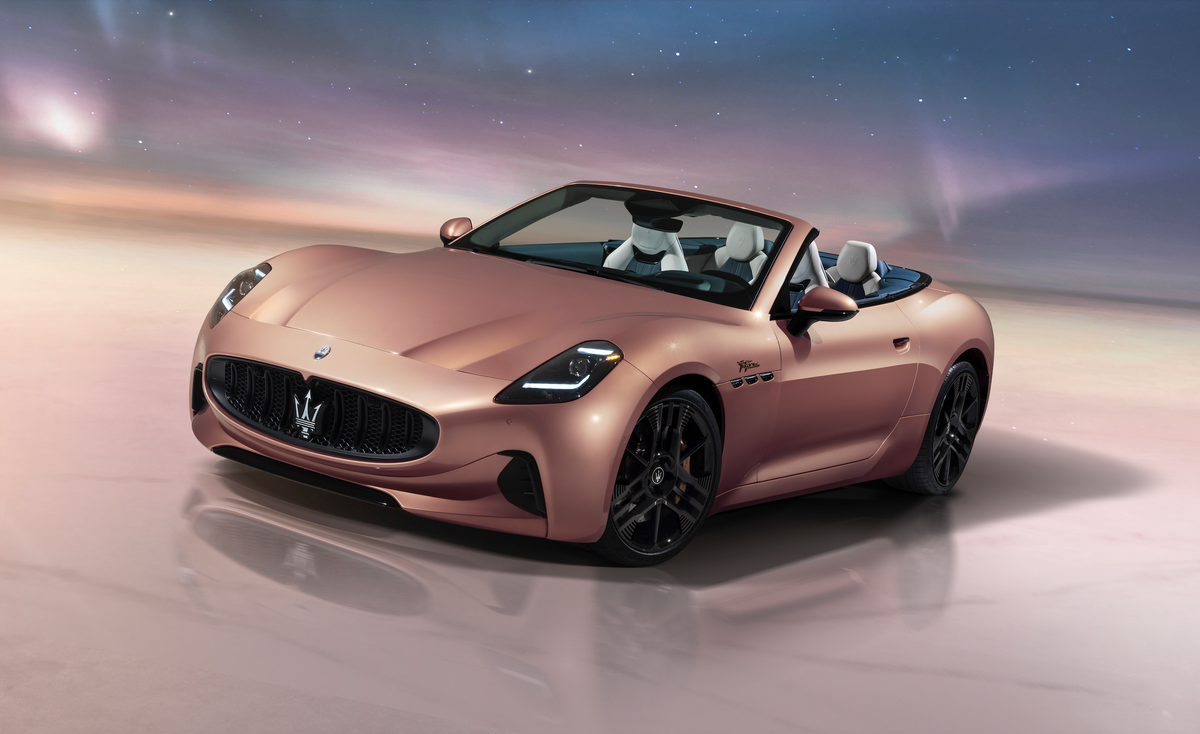You’ve probably seen plenty of knocking copy about battery electric cars in parts of the media that should really know better. Of course they have their drawbacks, both intrinsic to the still-novel method of propulsion, and in terms of their practicality, especially for folk who can’t charge their car at home. Fair points.
They’ve also been described as soulless, boring, even ugly. Some are; but from the very home of the traditional Italian supercar, Modena, comes living proof that an electric car can be superbly engineered, classy, desirable, athletic and, above all, beautiful.
Meet, then, the new Maserati GranCabrio. It is indeed the world’s first fully electric convertible luxury car, and fastest fully electric convertible on the market – and it’s gorgeous.
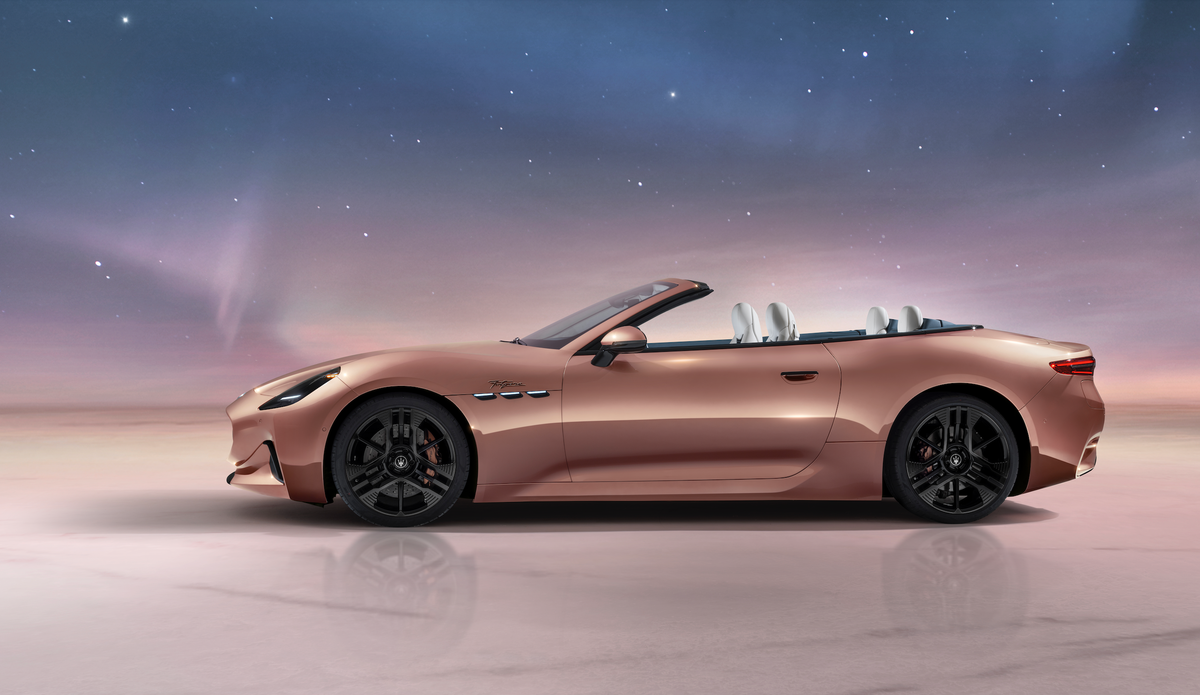
It comes at an opportune moment, at a time when the transition from the internal combustion engine to battery packs and electric motors has stalled somewhat – as the latest financial results from the two global BEV (battery electric vehicle) leading manufacturers, Tesla and BYD, demonstrate.
There’s buyer resistance, some over-capacity, and some companies, such as VW group and Ford, are rejigging production patterns in response. That may also be true of Maserati’s corporate parent, Stellantis, the vast group that also includes Peugeot, Citroen, Chrysler and Fiat in its stable.
That their proud and independently-minded flagship luxury brand, Maserati, a name synonymous with elegance and performance, has chosen now to accelerate the full electrification of its range is both a gesture of confidence in the future of BEV technology and of the vitality of the brand and the group.
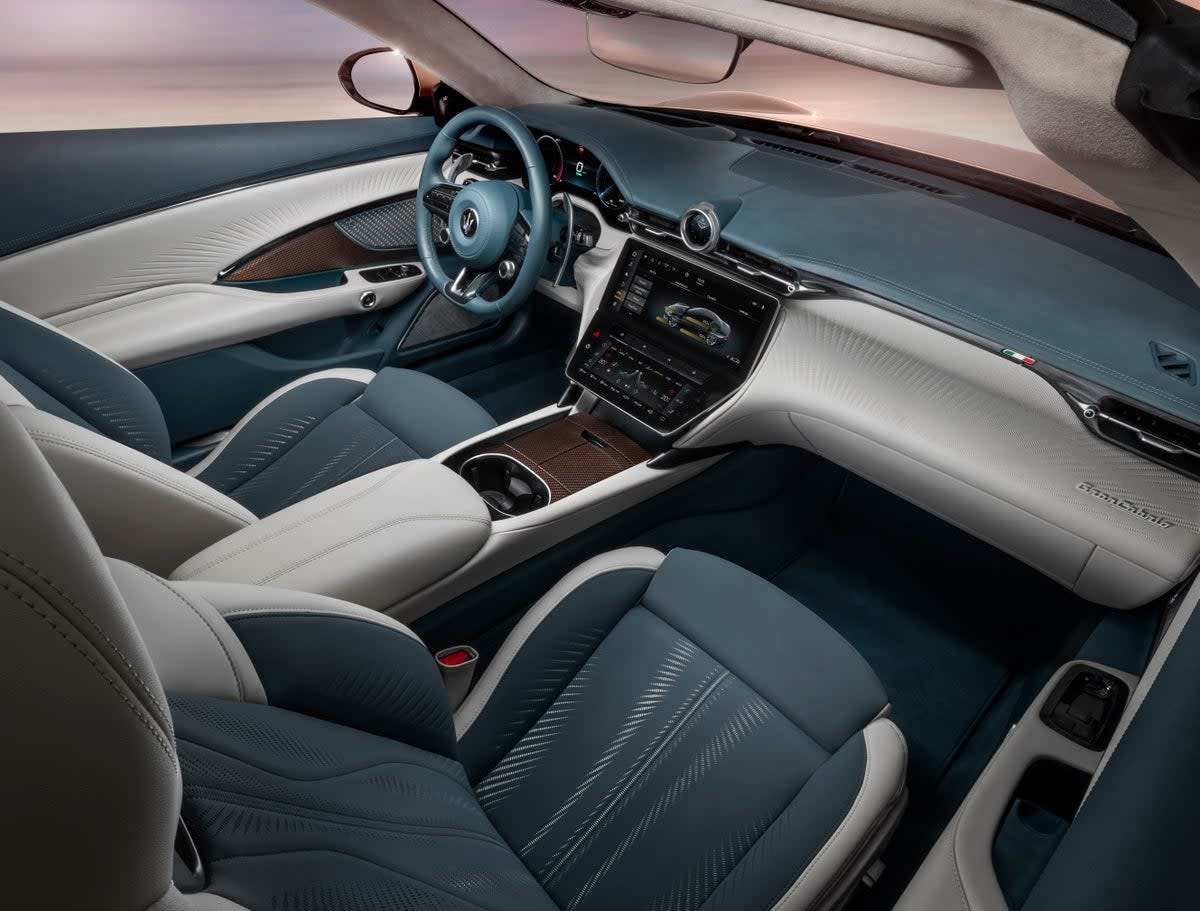
The electric car, in short, needs a hero, a “halo” model to champion its virtues, and this Maserati is it.
The new electric cabrio joins its coupe sibling, the GranTurismo and the glamorous Grecale SUV in a line-up of pioneering designs that excite and delight in equal measure. They call these variants “Folgore”, being the Italian for lightning, and they are badged accordingly, pretty much constituting a sub-brand.
For the foreseeable future the company will still offer its redolent petrol V6s, but the Folgore models are the future, including for the MC20 supercar.
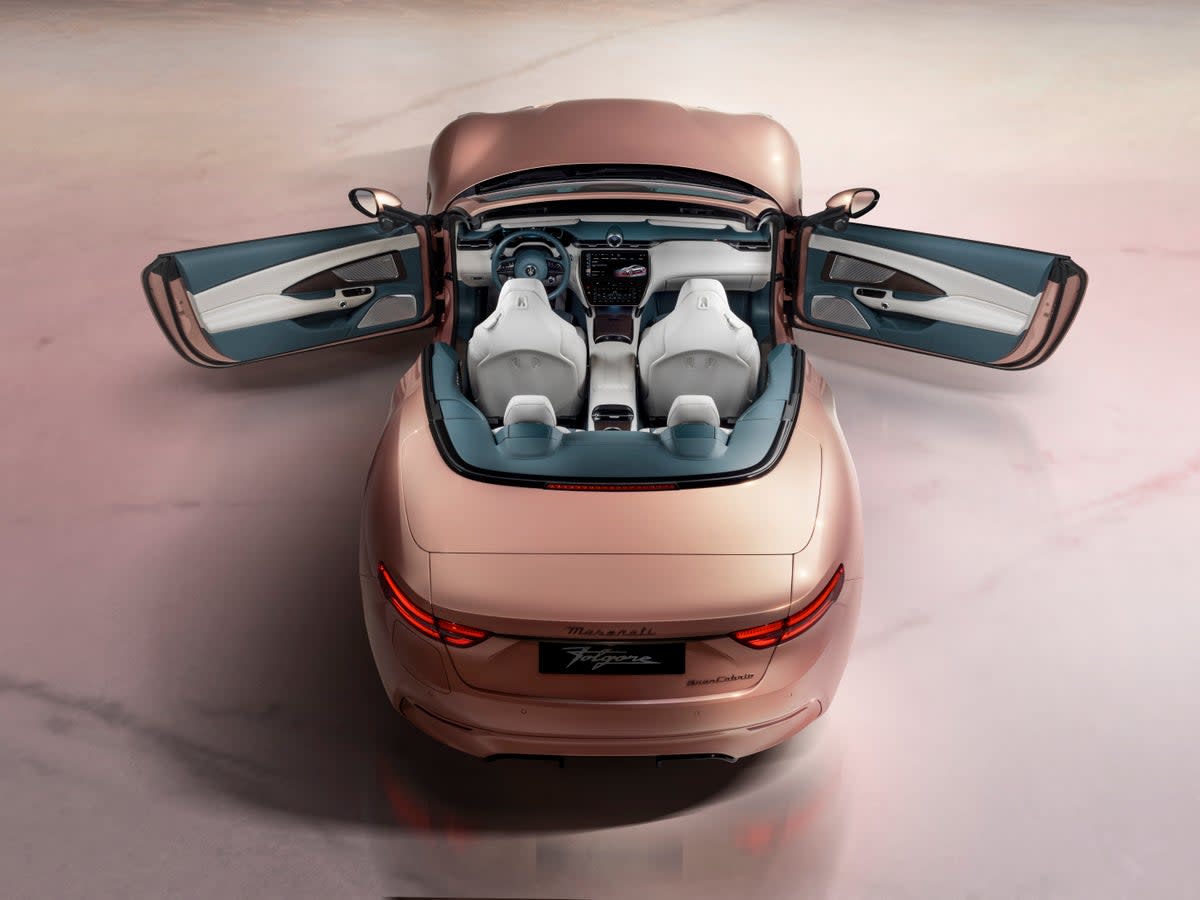
Yes, I’m a Maserati fan (though not exclusively – Lamborghini is up there too), so you may discount the hyperbole, but judge for yourself the GranCabrio on its merits.
Boldly presented in a pleasing shade of rosine, rather than the Maserati signature royal blue or some lurid shade of red, the GranCabrio recalls the look of some of the most striking of its grand touring predecessors. In particular, the models produced during Maserati’s first full decade as a craft manufacturer of road cars, in the 1950s (the company had been in track racing only since 1914 when the Maserati brothers, Alfieri, Bindo, Carlo and Ernesto found an outlet for their passion in the most heroic era of motor sport).
Now, 110 years on, that same passion runs through the present Maserati “family”. It’s a joy to see such an ethos and tradition survive well into the 21st century and the age of globalisation. Of course, that trend cuts both ways – Maserati can make the most of the Stellantis group’s in-house systems, and can export its “made in Italy” models to 70 countries. The GranCabrio should find itself a ready market.
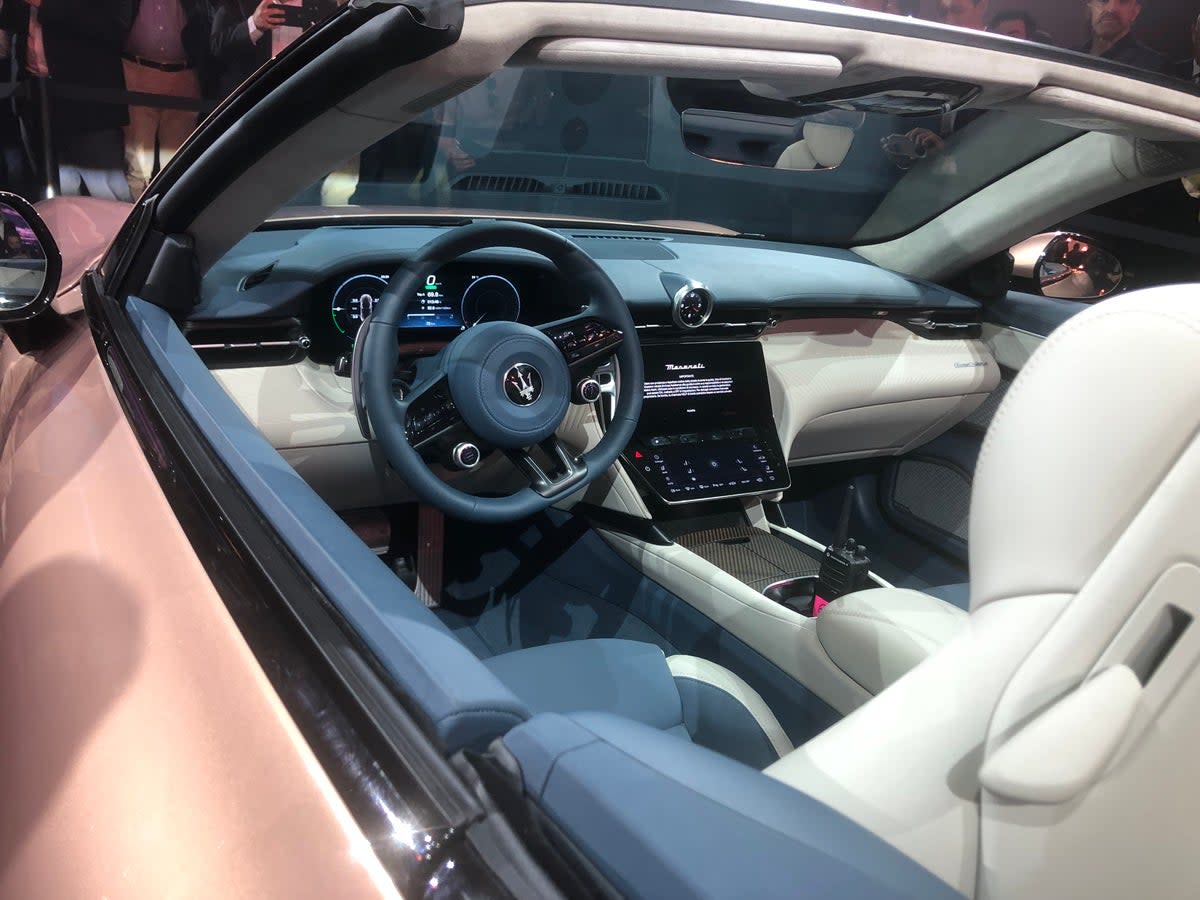
The trademark Maserati styling cues are all present in the GranCabrio, and they’ve wisely persevered with a conventional canvas roof – better for weight reduction and long-term reliability than a folding electric one.
There are three 300-kW permanent magnet motors powered by a 610-kWh battery pack, and it’ll do zero to 60mph in less than three seconds, and on and on you go to 180mph (at which point you really will be running the battery down). Quite the achievement, then, for something weighing 2.3 tonnes.
On average you should enjoy a range of 250 miles or so, and it won’t take you long to recharge (and after a few hundred miles you ought to have a coffee break anyway). For those who want their Maserati to sound as well as look like a Maserati, they offer an external speaker “soundtrack” derived from the growling, rumbling, screaming motors fitted to classic models.
THE SPEC
Maserati GranCabrio Folgore
Price: £250,000 (estimate)
Engine capacity: 3x electric motor, all-wheel drive powered by 92.5kWh battery
Power: 818bhp
Top speed: 180mph
0-60mph: 2.8 secs
Fuel economy: 4.4kWh/km
CO2 emissions: 0
So it can sound and go as well as it looks. The wide oval grille has been “reversed” in the BEV versions, so that most of the grille is closed and the slats are open, the reverse of the usual set-up, but the look works and it’s much nicer than the usual blank fitted to many BEVs where their “face” should be.
It’s set low on the road, and the headlights relatively high, and the proportions throughout are classic. It’s a big car, at five metres long, and a full four-seater, but the coherence of the styling – some crafted by veteran bodybuilders with decades of experience – makes it seem more compact.
It’s a fashionable sort of shape, but feels not so exaggerated as to become dated quickly (like all smaller-volume models it needs a long life to be viable to produce). As a grand tourer it’s capable of crossing continents, but, as its developers point out, you can detour for a circuit of Imola or the Nurburgring en route to Monaco or Portofino. That sort of idea. They call this blend of the car’s abilities and driver experiences “enjoyment and engagement”.
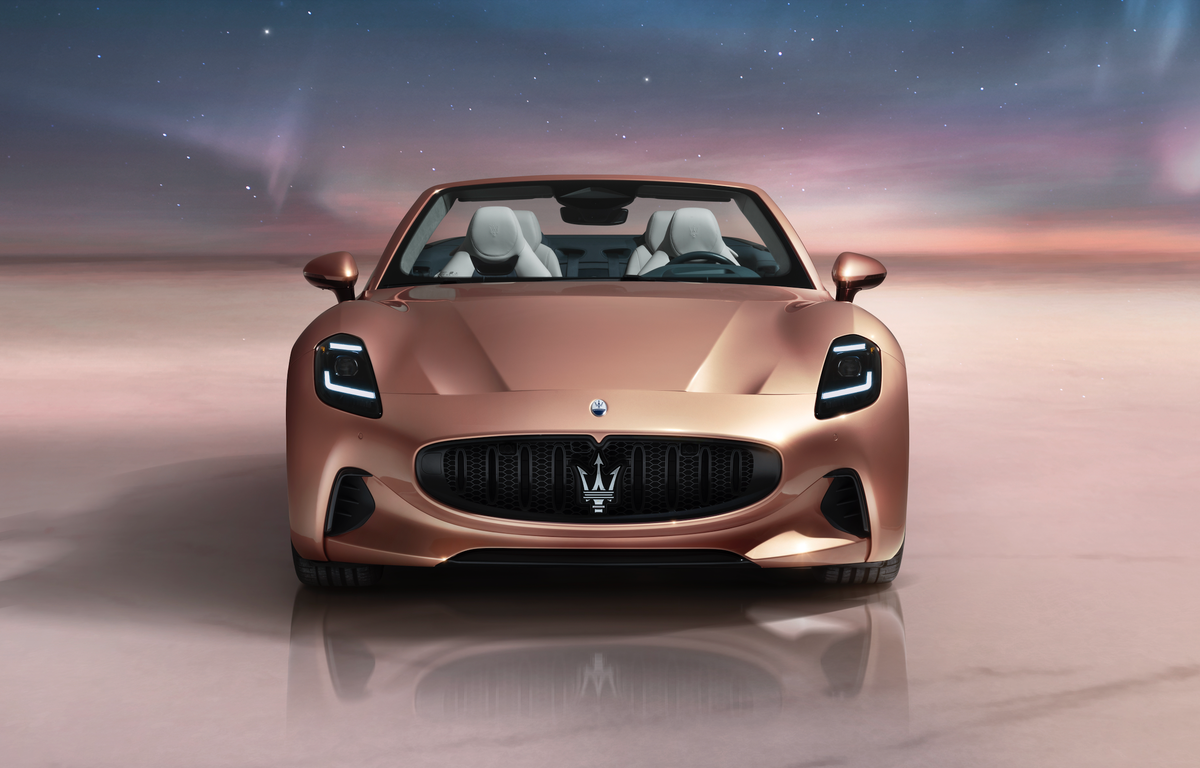
The interior is snug and practical, and Maserati provide two touchscreens for their drivers, as well as some proper dials and switches. If the GranTurismo, on which the GranCabrio is based, is anything to go by, the GranCabrio can be as relaxing to drive as it can be exhilarating, as the mood takes one.
The materials are all of the highest quality, and some unusual and unique customer demands can be pandered to by the bespoke division – special paintwork, interior materials, even your family crest picked out on the laser-cut body panels or the leather seats.
Indulging myself at the GranCabrio launch event I asked the bespoke team leader if I could get my GranCabrio painted the same colour as my first car, a primula yellow Austin Mini. She explained that they don’t reproduce other companies’ colours, though something very close, maybe with a textured or chromatic finish could be provided. I protested that Rolls-Royce wouldn’t have any objection to my colour scheme, to which she could only reply, smiling, “But we are Maserati”.
Seat covers in Harris tweed or 1970s-style velour could be arranged though, one way or another. Just so you know.
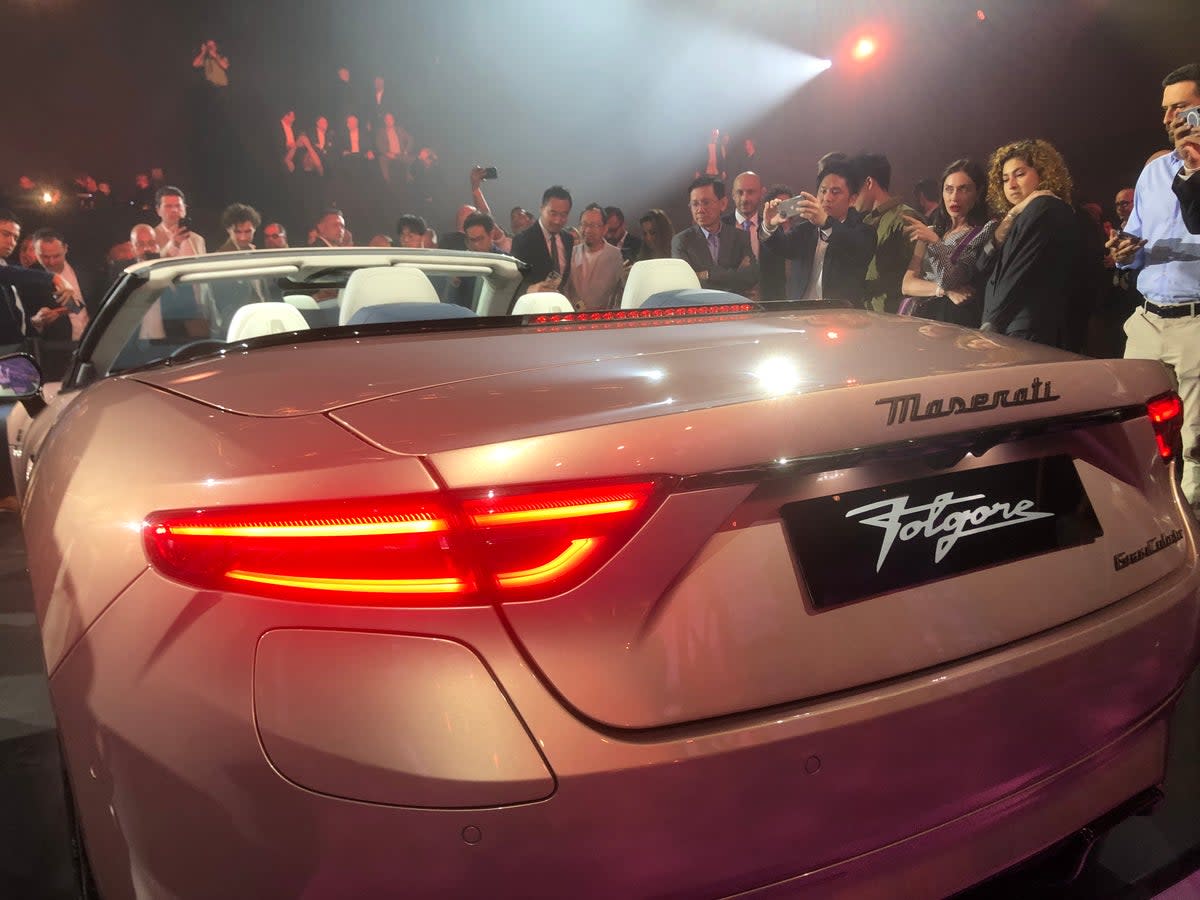
The Maserati GranCabrio Folgore roams around the rarefied end of the car market and Maserati have no wish other than to keep their cars rare and seldom glimpsed. To spot “the trident” should be as special an occasion as being fortunate (ie rich) enough to have one tailored to your tastes and delivered to your door.
When it comes to market later in the year the Maserati GranCabrio will sell for about a quarter of a million pounds, and that’s before you start experimenting with the colour palates and materials. Worth it, though.
Credit: Source link
